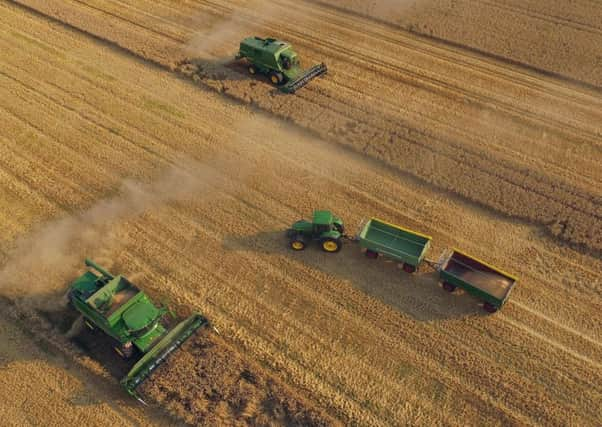Weather conditions will sort out the wheat from chaff
This article contains affiliate links. We may earn a small commission on items purchased through this article, but that does not affect our editorial judgement.


And with the weather over the past few weeks meaning that this year’s stop-start harvest has had way too much emphasis on the “stop” part, the challenges faced by farmers at the moment almost equal those which many of the crops had getting established this spring.
So, with yet another different set of weather patterns testing crops this year, only the harvest will tell which varieties have, in some cases quite literally, stood up best to the challenge.
• READ MORE: Farming news
Advertisement
Hide AdAdvertisement
Hide AdThe grain futures prices might have been swinging wildly in recent weeks but, with the exception of pre-harvest glyphosate, harvesting and drying, the bulk of the costs of growing the crop will now have been borne.
And the majority of fungicides offering only protection rather than cure, most growers probably chose to pay the hefty insurance premium of a fairly robust spray regime, once again.
There’s no escaping the fact that the bulk of disease control measures come out of a can these days, rather than relying on any inherent plant resistance. And while there have been some indications of a more emphasis on varietal resistance, the change is slow – and until growers signal a major shift on this front breeders will continue to see yield as the only yardstick.
But while the recommended list trials are carried out with what most growers would consider a “stout belt and extra strong braces” spray programme which would be difficult to justify under commercial conditions, we are beginning seeing a bit more emphasis being placed on varietal performance in the untreated replicates which give a measure of disease resistance.
We’re still a bit behind the continent though, with both France and Germany amalgamating all the various attributes of a variety – and here the untreated yield is playing an increasingly important role in establishing the headline performance figure for a new variety.
Even at home though, the buzzwords of resilience, robustness and consistency are now cropping up again and again at demonstration days – as breeders are getting the message that these aspects of a variety are more important to growers than the ability to perform well only when the conditions are right.
A year like the one past will undoubtedly test these factors – and add further evidence to where breeding programmes have gone right and where they’ve gone wrong.
Advertisement
Hide AdAdvertisement
Hide AdBut at farm level we’re still a fair distance from ditching the spray can. And while the highly politicised arguments over the re-registration of glyphosate have perhaps dominated the headlines in recent months, it’s very far from being the only weapon in our armoury under threat.
• READ MORE: NFU Scotland welcomes glyphosate herbicide all-clear
The arguments over what constitutes safe – and the semantics surrounding the differences between risk and hazard have been raging for some time. And it’s becoming obvious that while all sides are claiming that science has to be the guiding principle, like religion, this belief system can be open to different interpretations - while also attracting fundamentalists who have a vested interest in deciding how the science is interpreted.
It’s only a few weeks since a positive decision on glyphosate looked to be in the bag – but the future currently looks less certain.
With only a few months left before a definitive decision has to be taken, after a year like this with uneven ripening, laid crops and a catchy harvest on the cards, the prospect of doing without the spray in the future – or a ban on its use as a harvest aid – is being viewed with a deal of trepidation by growers.
But the future of a whole host of other crop sprays also hangs in the balance.
Literally dozens of the commonest and, in our own damp climate, most important active ingredients are in a precarious position – and the EU will soon have to reach a final decision on whether they go for a risk-based or a hazard-based system when defining the so-called endocrine disruptors.
So while this year’s on-farm crop trials might have experienced some tribulations, they could face a lot more in the future.